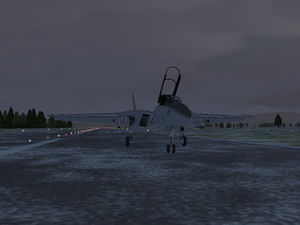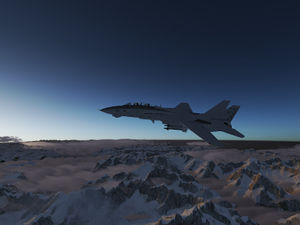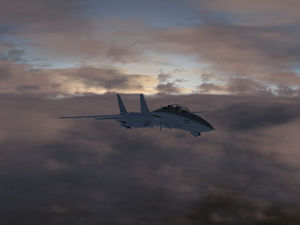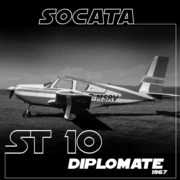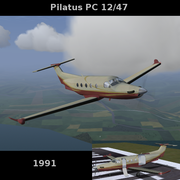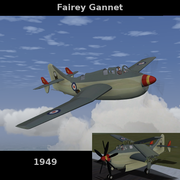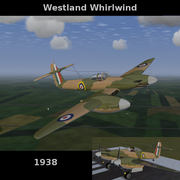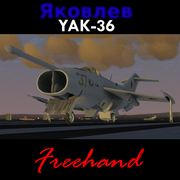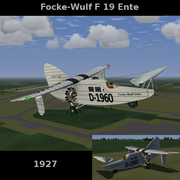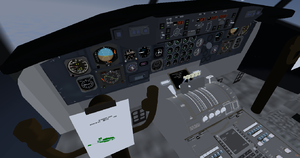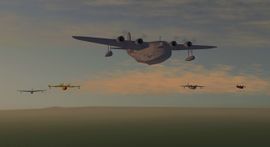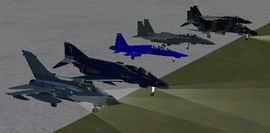FlightGear Newsletter December 2012
|
We would like to emphasize that the monthly newsletter can not live without the contributions of FlightGear users and developers. Everyone with a wiki account (free to register) can edit the newsletter and every contribution is welcome. So if you know about any FlightGear related news or projects such as for example updated scenery or aircraft, please do feel invited to add such news to the newsletter. Core developers are encouraged to add news about their latest work to the newsletter's development section and the changelog of the upcoming release.
Happy New FlightYear to everyone!
2013 brings a whole lot of exciting stuff to the FlightGear world. As always, this is the time to look back at the past year and forth to the new year.
2012
- This was the first full year after we adopted the new release plan. Two versions were released, one in February, the other in August.
- In July, the project celebrated the 15th anniversary of FlightGear. A large screenshot contest was organised, with the winning screenshots being used to promote FlightGear 2.8.0.
- Project Rembrandt was introduced in Flightgear 2.8.0. After an absence of nearly four years, shadows have returned.
- Throughout the year, the scenery database has seen a major overhaul, making it easier than ever before to submit objects and models.
2013
- We will have two releases this year, with FlightGear 2.10.0 coming up soon on February 17.
- The core scenery team plans to release a new world scenery, including airports in the 850 format and CORINE data.
Development news
Atmospheric Light Scattering
The atmospheric light scattering rendering framework received a major overhaul. Snow is now generated procedurally, which improves the performance if no snow is in the scene, but also allows the user to control the thickness of the snow layer - the shader can do a very light snow cover like in the winter textures all the way to a closed, thick snow layer.
A new runway effect shader, similar to the one in the default rendering scheme, shows a hires bumpmap for runway closeups and displays also snow drifts in high resolution on the runway if the terrain at this altiude is snow-covered. This is complemented by a high resolution grass texture for the green around the runway.
Major changes have been done to the ambient lighting of terrain and clouds in low light - the previous ambient light curve has been replaced by a light curve measured from a large set of photographs of sunsets. As a result, the color balance of cloud shadows in low sunlight is now much more realistic, and the effect of clouds casting a shadow on other clouds is now also effectively accounted for.
In the course of these changes, the framework is now also able to render moonlit scenes at night, however this is not currently integrated to be done automatically.
Combined and fully integrated with Advanced Weather, Atmospheric Light Scattering is now able to render highly realistic lighting and high-quality scenery texturing, rivaling the visual quality of FSX.
Canvas System
Recently the canvas system has received a basic event system similar to the DOM event handling used by JavaScript and HTML. This is an important step towards a fully canvas based GUI as it allows attaching mouse event handlers directly to any canvas element without a need to take care of any mouse intersection tests. Adding a mouse click handler to an element is now as simple as:
my_element.addEventListener("click", func print('my_element clicked'));
There exist much more event types like dblclick, drag, wheel, mouseover and mouseout.
For all non-developers: this update is an important brick in building an improved GUI using the Canvas system :-)
Interview with a contributor
In each edition we try to have an interview with a contributor. Unfortunately no contributors were willing to write an interview this month. Anyone is free to write an interview (with him-/herself or others) for next month's newsletter! See interview questions for instructions on what to do.
Translators required
| The FlightGear Wiki still needs help for translating it into various languages. If you are interested in making the FlightGear Wiki multi-language then start at Help:Translate. | |
| Das FlightGear Wiki benötigt immer noch Hilfe bei der Übersetzung in verschiedene Sprachen. Wenn Du Interesse daran hast, das FlightGear Wiki Mehrsprachig zu machen, dann fang doch mit Help:Übersetzen an. | |
| De FlightGear Wiki kan nog steed hulp gebruiken bij het vertalen van artikelen. Als je interesse hebt om de wiki meertalig te maken, raden we je aan om een kijkje te nemen bij Help:Vertalen. | |
| La FlightGear wiki todavía necesita ayuda para traducirla a varios lenguajes. Si estás interesado en hacer la FlightGear wiki multilingüe, entonces comienza en Help:Traducir. |
In the hangar
New aircraft
|
Updated aircraft
Boeing 707-320C and 707-3J9C
The Boeing 707 has two new versions in Flightgear: the 707-320C and the 3J19C, which are downloaded and installed together as Boeing 707-320. The new version is based on the model of Innis Cunningham (already developed by Isaias Prestes). The gear and engines has been modified (with reversers), lights were added. The new versions have a detailed flightdeck, with working instruments, pedestal, etc. The FDM has ben re-writen in YASim.
Community news
FlightGear on Google+
The FlightGear Google+ page welcomed its 1000th plus this month! Please +1 us if you haven't already.
FlightGear on YouTube
The Viper project, that we mentioned in the January edition of the newsletter, is on airborne! Now we can see their good results.
You'll find more videos on the official Viper cockpit website.
Congratulations for that awesome project.
Multiplayer
FGUK's Saturday Night Flights
FGUK rounded off November with four more memorable outings, forsaking the bleak winter scenery of the United Kingdom for the warmer climes of South and Pacific America before returning to the Lake District for some low flying exercises within easy flying distance of our home base of Llanbedr (EGOD).
We started the month by leaving the fast jets snug in their hangars and paddling out to board seaplanes and flying boats dating from the classic age of intercontinental flight to modern day transport and fire-fighting aircraft. The additional challenge of beginning our flight from Lake Titicaca, 12000 feet up on the Andean Altiplano, set regular FGUK fliers practicing hard during the preceding week, with some of the older aircraft requiring skill and patience to even start their engines in the thin air, and all pilots adjusting to the unusual and slightly tricky experience of taking off at altitude. Their efforts paid off, forming up around Flight Leader Algernon to skim the Andes before descending steadily down with the terrain to land in a flurry of surf off the Peruvian coast. This was almost certainly a collection of aircraft never seen flying together before, with a truly gargantuan Hughes H4 Hercules (the Spruce Goose) joining Canopus, the first Short S.23 'Empire' flying boat, a Bombardier 415 water-bomber, classically-beautiful Consolidated Catalina PBY and Grumman Goose among others.
Next week saw a return to a more traditional FGUK theme, with assorted fast jets hammering across somebody else's airspace. Flight Leader Neilson chose Hawaii for this flight, in order to showcase the new scenery package included in FGFS 2.8; it attracted a varied selection of fighters and ground attack aircraft including several classics from Dave Culp's hangar, which FGUK now hosts and maintains. Two F4 Phantoms, two F-15s (one C and one E) and a brace of Tornado GR4s shattered the peace of the island for two hours, at speeds high enough to require a refueling at Hilo. As is becoming standard now for all flight planners, Neilson put a good deal of preparation into this flight, with an illustrated flight plan and a downloadable Route Manager route available in advance of the event, and as always, our multimedia artists got to work during the following week to collate and shape their collected stills and video clips into galleries and movies, which are available in the FGUK media forum (see the link below).
The chance to hone some slightly rusty skills came the following week, with a theme surround a single aircraft, and one which is both famously capable and notoriously tricky to handle - the physics-defying BaE Harrier. As one of the great British aircraft of all time, the Harrier is well represented in the FGUK hangar and the pilots had several incarnations to choose from for this high-speed, low-level, cross-continental mission from Chile to Port Stanley. Planned and led by N-SCOT, the flight plan had some tricky twists, including employing the Harrier's ace card feature: its ability to operate away from traditional flight infrastructure, in this case, a beach refueling. One vertical take-off later, and the squadron was skimming the waves, headed southeast for Stanley at 200ft AGL. Reports that the first round in the Victory public house was purchased by StuartC are apparently without substance.
The last week of November took us closer to home when Moli organised a flight to the Lake District in the North of England. Departing Walney Island airfield (coincidentally the site of the first ever FGUK flying event back in 2010) were Hawker Hunters, Vought F-8 Crusaders, and an FGR2 among others. The weather was typically damp and grey, but with cockpit heaters turned up the low-level blast through the valleys and over the lakes was a success.
FGUK welcomes pilots from all corners of the FG universe to fly with us on a Saturday at 2000hrs UTC. Please check the Saturday Night Flying subforum on our website to find out where we will be gathering and whether there are any recommendations or requirements for aircraft, and address any questions to us there. We hope to see you in the skies!
Virtual airlines
BRT Virtual Airlines
Thanks to the support of its community, BRT is still alive and has undergone some changes recently.
BRT now has an official video editor, Andrew Saha (BRT0082). Check out his latest video below:
BRT also has released their 4th generation liveries, designed by Benson Wong(BRT0105). He has strived to keep the original spirit of the liveries, and meanwhile adding the "Metropolitan Waves" element in the livery and gradients in order to produce a more dynamic look for the planes. He is also the one who also made BRT's new official advertisement below.
Again, thank you for your support to BRT to let us change for being better! :)
And finally ...
Contributing
One of the regular thoughts expressed on the FlightGear forums is "I'd like to contribute but I don't know how to program, and I don't have the time". Unfortunately, there is a common mis-conception that contributing requires programming and lots of free time. In fact, there are a huge range of ways to contribute to the project without needing to write code or spending days working on something.
For ideas on starting to contribute to FlightGear, you may want to check out: Volunteer.
To learn more about how the project works, please see this short essay ![]() written by Thorsten.
written by Thorsten.
Call for volunteers
- The Flightgear On Android team is looking for testers
- The Target4Today team is looking for volunteers to help improving FlightGear's combat support
- The FGFSPM (FlightGear Package Manager) is looking for a new maintainer.

